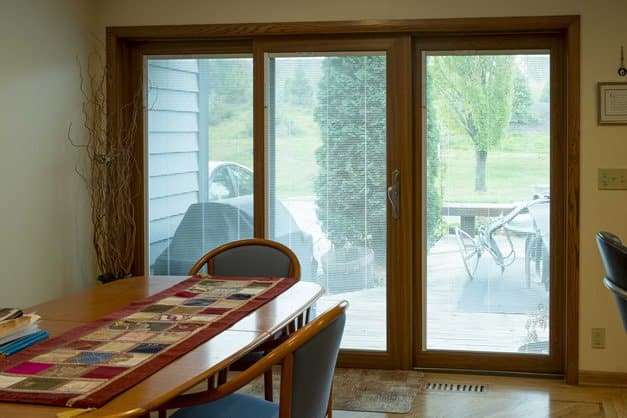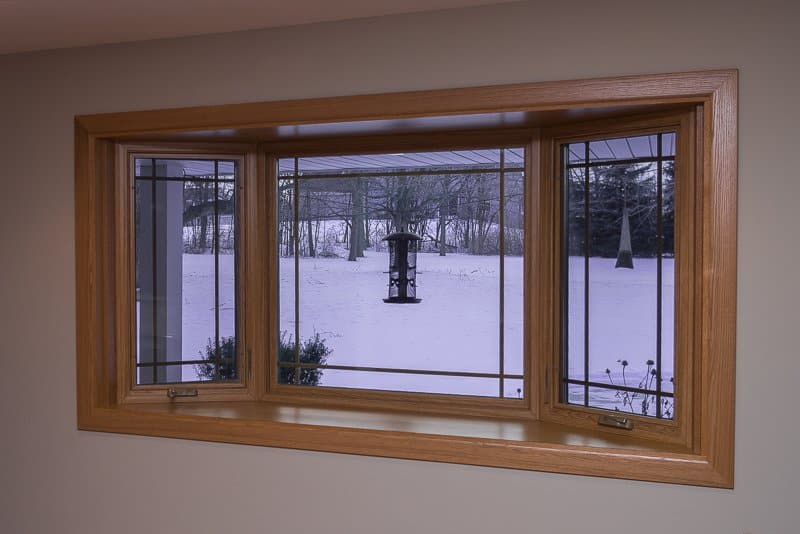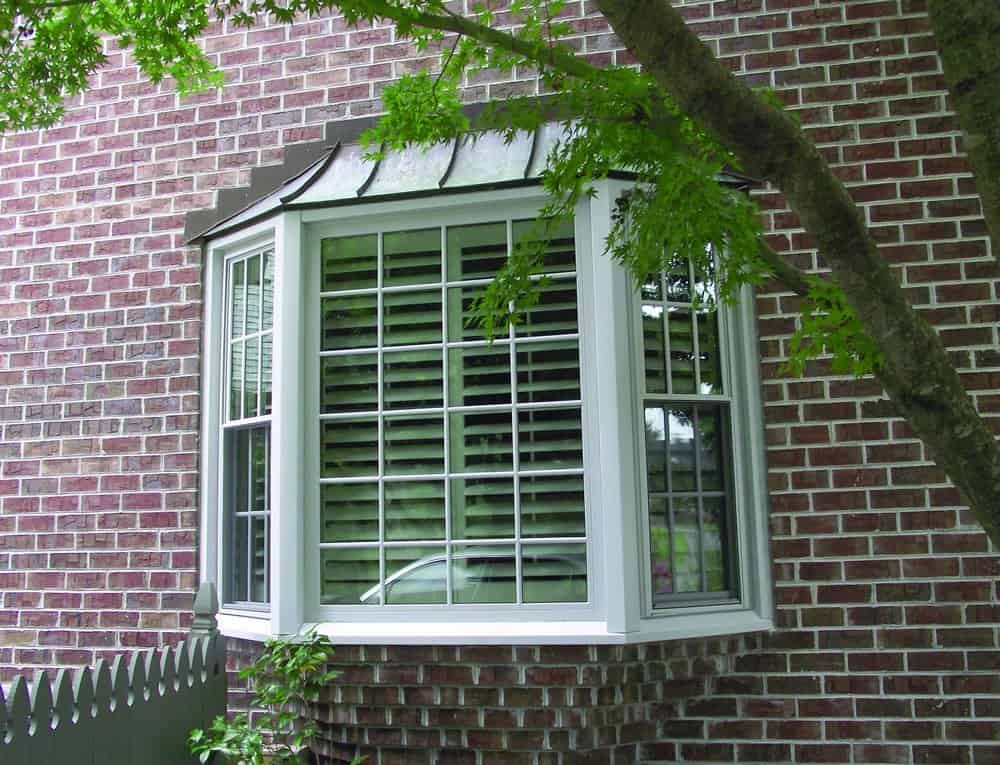What You Need to Know About Patio Door Replacement
With summer fast approaching, chances are you’re excited to spend more time out on your patio. You’re probably ready to open up your sliding patio doors and let in that fresh air…
But like many homeowners in Wisconsin, you may discover your patio door isn’t working quite as smoothly as you’d like. You wrestle to slide it open; it goes off track. You worry about the locking mechanism, so you jam a broom handle in the bottom. You notice air seeps in, even in the winter and the seal doesn’t keep out the cold.
Bad patio doors become the bane of a homeowner’s existence. It’s a constant struggle. If this sounds like you, it’s time to consider patio door replacement. Weather Tight is ready to help!

5 Signs It’s Time for Patio Door Replacement
The most obvious sign of a patio door problem is one that “jumps the track” every time you slide it open. Generally, the difficulty extends to the screen, too. Screen doors are often the nemesis of a patio door owner. The door may seem to work somewhat properly, but the screen gets stuck, feels flimsy, and is tough to open.
When your patio door is difficult or hard to use, it’s less convenient to enjoy your home. If you need to walk all the way around your house to get to your patio, that’s a major (and annoying) problem. Of course, there are a few other common issues with patio doors, too. Here are 5 signs it’s time to consider a patio door replacement.
1. Your Patio Door Has Fogged Glass
People approach us often, saying, “I think my door is fine, but the glass is all fogged up.” Unfortunately, this is often a sign the seal around the door is shot. Fogging is different from normal window condensation; it typically appears (and stays) trapped between panes of glass. Not only is fogged glass unsightly, but it’s a sign moisture is leaking between glass panes. You’re getting heat loss and other issues.
When a Weather Tight expert comes out, they’ll take a look at your door. We’ve seen circumstances where the door is fine, and there’s simply a problem with the glass (in which case we’ll refer you to a glass replacement specialist who will fix the glass easily). Most of the time, however, fogged glass is an indicator of bigger issues with the patio door.
2. You See Mildew and Discoloration Around the Patio Door Seal and Floor
Another common concern with patio doors, especially in the spring when warmth and moisture come in, is mildew along the sealing around the glass. Another tale-tale sign is discoloration on the floor near the door. Here in Wisconsin, moisture seepage is a big issue, thanks to those icy winters.
Most older patio doors were built with an aluminum track. Unfortunately, this type of track isn’t ideal for cold weather, especially if there’s a patio or deck leading up to the patio door. Snow and ice build right up around the door itself. Aluminum conducts the ice, and you’ll see it melt, refreeze, and rot around the door.
How do you know when it’s time to replace your patio door? Learn more about patio door replacement with this Tod & Todd’s home improvement tips video!
3. Ants are Marching in Your Home
Another (annoying) sign that patio door replacement is needed? Ants marching in your home. Often when the seal around the patio door doesn’t close tightly due to rot (or because you’ve had to force the door open and closed, misshaping it), small spaces form. These spaces are perfect for letting in ants and other pests. Even worse, we’ve seen many situations where we take out a door to discover ants have eaten away the substructure, knee wall, and wall below it. You often can’t see the damage until it’s quite far along.
If ants can get in and out of your home, cold air is getting inside in the winter as well. You’re likely experiencing heat loss around your poorly sealed patio door. While the screen is great for letting in the breeze during the summer months, you may also be overworking your air conditioner when you close the door because the door is no longer airtight.
4. You Need a Broom Handle to “Lock” Your Patio Door
One of the biggest dangers that homeowners face with old patio doors is security. Unfortunately, older doors don’t close or lock properly. Often, when you’ve had to shake and wiggle the door to get it on track, you’ve also made the door looser and easier to jimmy open. If someone wants to get in, they’ll wiggle the door hard enough to free it of the single, short lock.
Many homeowners mitigate this problem by getting out their trusty broom handle. We’ve heard more than one instance of the broom handle falling down in the track accidentally and locking the homeowner out! Intruders, on the other hand, won’t hesitate to use a screwdriver to easily pop up the broom handle/wooden bar and get right in.
Our replacement patio doors feature an ultra-secure three-point locking system. The door locks in three locations along the frame. Instead of using short screws to secure the door, we use longer screws that go all the way into the door frame. This ensures you can put away your broom handle and feel safe because there’s no way to break the door open by wiggling it.
5. Your Door Is Difficult to Open or Has to Be Forced
Again, probably the most common complaint of all is difficulty opening patio doors. What happens when a homeowner can’t open their patio door (especially in the summer months, when it’s being used all the time)? They wiggle it around. They wrestle with the door. They force it open and closed. This means your door gets bent and the frame no longer fits into the track.
There’s no reason to feel bad about forcing your patio door open too many times. The truth is, older patio doors were poorly made. The wheels lock up, and they jump off track. The flimsy screens get easily bent and become unusable. It’s a serious pain in the neck.
Replacement patio doors from Weather Tight feature screens hung like barn doors—from the top using a rail. Instead of bearing weight, the screens are suspended from a monorail on the top. They slide easily and more consistently. They don’t get bound up in the track or become misshapen from being wiggled around. Many homeowners can’t believe how much easier it is to slide the new patio doors open and closed and then securely lock them when needed.
If you’re ready to enjoy summer with a beautiful, easy-to-use, secure patio door, give us a call! Our Weather Tight experts are happy to schedule a consultation to assess your current door and patio door replacement needs. New doors will help you step outside with ease and enjoy the sunshine on your patio. Don’t let another summer go by while you wrestle with your patio door—call today!

 414-459-3874
414-459-3874















 Text Us!
Text Us!


